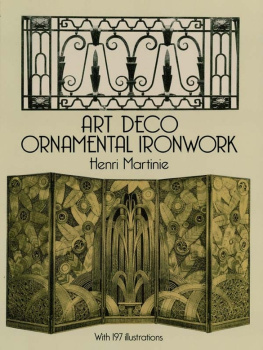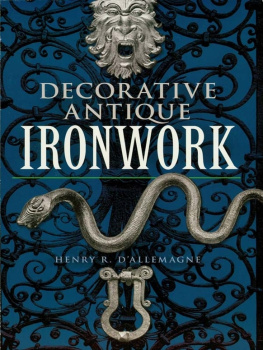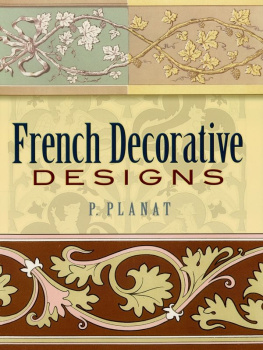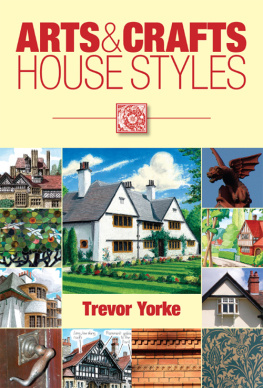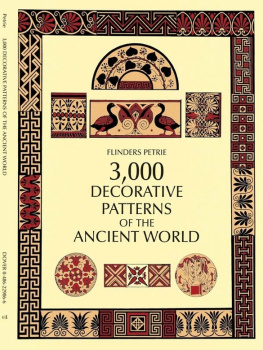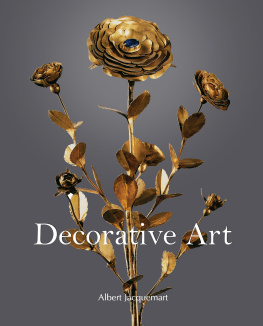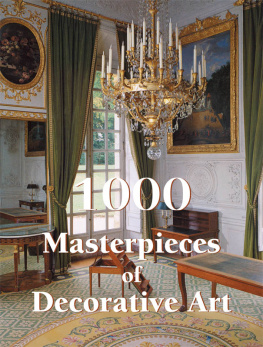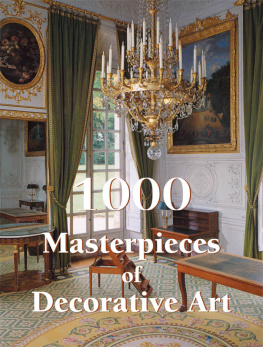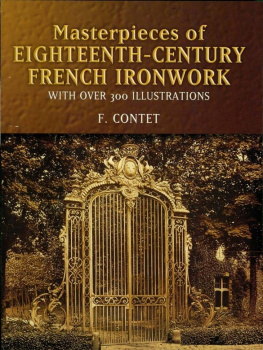The Countryside Agency - Decorative Ironwork
Here you can read online The Countryside Agency - Decorative Ironwork full text of the book (entire story) in english for free. Download pdf and epub, get meaning, cover and reviews about this ebook. publisher: Fox Chapel Publishing, genre: Children. Description of the work, (preface) as well as reviews are available. Best literature library LitArk.com created for fans of good reading and offers a wide selection of genres:
Romance novel
Science fiction
Adventure
Detective
Science
History
Home and family
Prose
Art
Politics
Computer
Non-fiction
Religion
Business
Children
Humor
Choose a favorite category and find really read worthwhile books. Enjoy immersion in the world of imagination, feel the emotions of the characters or learn something new for yourself, make an fascinating discovery.
- Book:Decorative Ironwork
- Author:
- Publisher:Fox Chapel Publishing
- Genre:
- Rating:5 / 5
- Favourites:Add to favourites
- Your mark:
- 100
- 1
- 2
- 3
- 4
- 5
Decorative Ironwork: summary, description and annotation
We offer to read an annotation, description, summary or preface (depends on what the author of the book "Decorative Ironwork" wrote himself). If you haven't found the necessary information about the book — write in the comments, we will try to find it.
Decorative Ironwork — read online for free the complete book (whole text) full work
Below is the text of the book, divided by pages. System saving the place of the last page read, allows you to conveniently read the book "Decorative Ironwork" online for free, without having to search again every time where you left off. Put a bookmark, and you can go to the page where you finished reading at any time.
Font size:
Interval:
Bookmark:

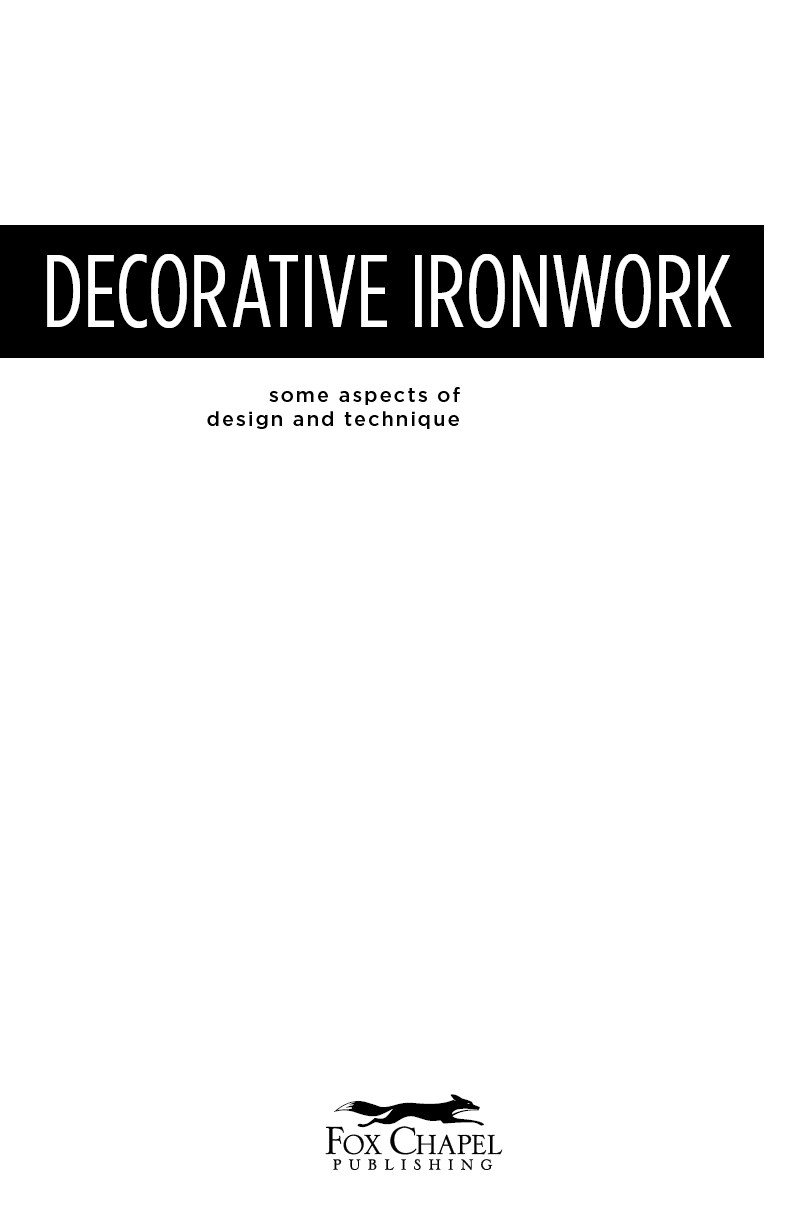

Dear Reader:
Were very happy to bring the classic Blacksamithing Series from COSIRA (Council for Small Industries in Rural Areas) back into print. In the 35 years I have worked as a bookseller and publisher, certain iconic titles stick out. This series is one of those considered a classic because the photographs, text, and illustrations are so complete and highly focused on its subject.
The series:
Blacksmith's (978-1-4971-0046-6)
Wrought Ironwork (978-1-4971-0064-0)
Decorative Ironwork (978-1-4971-0063-3)
You hold the Decorative Ironwork volume in your hand. As you read, please be aware that we have not made any attempt to update the techniques or tools. Consider this treasure trove of knowledge a time capsule from the past.
May you be inspired to pick up the blacksmiths hammer and try your hand at this ancient skill.
Enjoy!
Alan Giagnocavo, Publisher
Fox Chapel Publishing
1953 by Rural Development Commission. This edition copyright 2019 by Fox Chapel Publishing.
All rights reserved. Decorative Ironwork was originally published by Rural Development Commission under the title Decorative Ironworks Great Britain. This version published by Fox Chapel Publishing Company, Inc., 903 Square Street, Mount Joy, PA 17552.
The patterns contained herein are copyrighted by the author. Readers may make copies of these patterns for personal use. The patterns themselves, however, are not to be duplicated for resale or distribution under any circumstances. Any such copying is a violation of copyright law.
Print ISBN 978-1-4971-0063-3
eISBN 978-1-6076-5729-3
The Cataloging-in-Publication Data is on file with the Library of Congress
To learn more about the other great books from Fox Chapel Publishing, or to find a retailer near you, call toll-free 8004579112 or
visit us at www.FaxChapelPublishing.com.
We are always looking for talented authors. To submit an idea, please send a brief inquiry to
.
A famous American humorist once described a certain type of film as 'films which begin in the middle for the benefit of people who come in in the middle'.
Unlike such films, this volume has been designed to be read from the beginning.
It is directed principally at craftsmen: men who start a job at the beginning and patiently carry on through their task with the determination to achieve results of the highest quality in the end.
We respectfully ask readers to
begin at the beginning.

This is the third manual on the subject of blacksmithing to be published by the Council for Small Industries in Rural Areas.
The first, The Blacksmith's Craft, dealing with basic and general smithing, was followed by Wrought Ironwork, a technical work in which the basic elements of the decorative side of the smith's craft were described.
In both these works great attention was paid to technical detail throughout the profusely illustrated texts. To a large degree they were complementary and were addressed to the novice as well as the more advanced smith.
This third volume has, however, been compiled more with the specialist ironworker in mind. Consequently, a number of operations included under the heading of standard practice have not been described in detail, as this would have proved unnecessarily tedious to the skilled smith, and would also have tended to divert the aim of the book.
The purpose of the authors was, broadly speaking, threefold.
First to introduce a number of methods of working iron not normally found in association with scroll work; methods in fact dissimilar to those commonly employed in this country since the early 18th century, but lending themselves more readily to designs akin in character to work executed prior to that period.
Secondly, to suggest to craftsmen by means of certain of these methods or techniques, that a return to a form of design in which flat metal surfaces, rather than narrow edges, are more prominently displayed, might tend to produce ironwork better suited to some styles of modern architecture.
In relation to the latter point, it was felt that the style of modern continental ironwork, in which similar technical methods have been exploited for some considerable time, would eventually be bound to influence patrons of the craft in this country. Until recently, designs copied or derived from the 18th century manner have been generally acceptable in Britain, but with the upsurge of continental travel the need for greater flexibility in ideas might arise.
This possibility materially affected the selection of techniques dealt with in this volume. They were chosen with the object of demonstrating to the craftsman and designer that quite a small number of 'moves' can yield a wider range of possibilities in design than might be expected. In this connection grilles Nos. 3 and 4 afforded an interesting example of identical methods producing, simply bythe change in direction of a chisel cut, two designs similar in structural form but differing widely in ornamental effect. The inclusion of more examples of this kind was considered undesirable if the third aim of the book was to be achieved.
Thus, thirdly, it was hoped that the manner in which the technical material was presented would prompt those receptive of new ideas to enter the experimental field through the medium of design, and create for themselves.
The exploitation of a technique for its own sake alone is liable to give rise to departures from established practice merely to achieve novel or ingenious effects: such results are without merit and it is for the avoidance of this fatal error that the design factor is stressed here and at intervals throughout the text.
Though working drawings of each grille have been produced and are available to rural smiths, the grilles should not be regarded simply as catalogue designs, but rather as examples to be studied one in conjunction with another.
Before any attempt is made to use an individual text as a working recipe, the volume should be read, as initially intended, from cover to cover. For good reasons certain details were dealt with at the ends of the chapters, while other material points mentioned in the text applying to one example may throw additional light on processes applicable to one or more of the other designs. Thus it was hoped that the reader would, by following the text consecutively, develop a mental picture of the subject as a whole, before becoming preoccupied with specific details.
The examples have been called 'grilles' for convenience and not because the repeating designs employed are suitable for the making of grilles only, or to suggest that the decorative features must necessarily fill any given framework. Several of the devices might well be used sparingly in large gates, for example, in the form of borders or panels, so long as the overall character of the work is maintained; in fact the techniques dealt with in this book can be applied over the whole field of decorative ironwork.
Font size:
Interval:
Bookmark:
Similar books «Decorative Ironwork»
Look at similar books to Decorative Ironwork. We have selected literature similar in name and meaning in the hope of providing readers with more options to find new, interesting, not yet read works.
Discussion, reviews of the book Decorative Ironwork and just readers' own opinions. Leave your comments, write what you think about the work, its meaning or the main characters. Specify what exactly you liked and what you didn't like, and why you think so.


